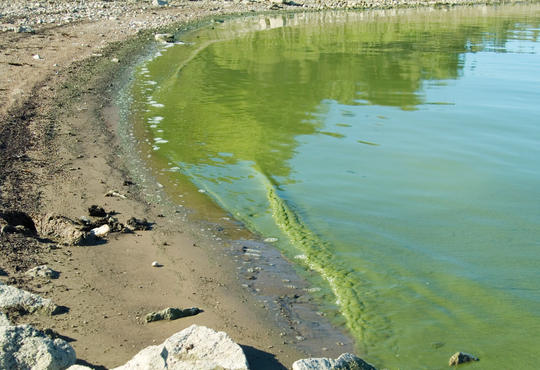Introduction
The United Nations (UN) member states worked very hard to attain the Millennium Development Goals (MDGs), established in 2000 and culminating in 2015. While water and sanitation were not an explicit MDG, a target was included to halve, by 2015, the proportion of the world’s population without access to safe drinking water and basic sanitation. The drinking water target was met five years ahead of schedule, with 2.6 billion people having gained access to improved sources of drinking water during that period. However, women and children are still spending countless hours fetching water for their households, and there remain approximately 663 million people in the world that still go without. Furthermore, we fell far from our target for basic sanitation, with 2.6 billion people continuing to lack access to adequate sanitation – almost one million of these report practicing open defecation.
In September 2015, the UN established new Sustainable Development Goals (SDGs). The new SDGs include, this time, the explicit goal (SDG6) to ensure the availability and sustainable management of water and sanitation for all. As the global community begins to take stock of SDG interventions in the coming years, mapping evidence on psychosocial outcomes, which were largely under-explored during the MDG era, will help raise awareness of the critical role that access to water and sanitation plays in promoting both health and well-being.
Methodology
To summarize the evidence around the psychosocial impacts of water and sanitation, we conducted a literature review of articles that explore impacts at the individual, household, and community level. Fifteen peer-reviewed articles met the review criteria, from a total of 1,492 studies identified through the database searches. Selected articles included studies from Kenya, Zimbabwe, South Africa, Bolivia, Ethiopia, India, and Mexico. The objectives of the literature review were as follows:
- Summarize the breadth of evidence linking water and sanitation to psychosocial distress.
- Explore the theoretical frameworks and methods that have been employed in water-related psychosocial research.
- Identify gaps and challenges for future research.

Outcomes
The review found that both inadequate access and the process of negotiating access led to distress. In addition, women bear a disproportionate burden of that stress as compared to men in many situations. The stressors identified in this review included physical stressors, financial stressors, social stressors, and perceived inequities (Table 1).
|
Table 1. Examples of psychosocial stressors found in the literature |
|
|
Stressor category |
Examples in the literature |
|
Physical stressors |
|
|
Social stressors |
|
|
Financial stressors |
|
|
Stressors associated with perceived inequities |
|
Results of the review highlight socio-cultural dimensions of water insecurity and sanitation practices that operate through complex social interactions and relationships to generate distress, including:
- Many studies quantifying health and economic benefits from water and sanitation interventions employ approaches that can underestimate either the socio-cultural burden of lack of access or the impact of interventions on limiting distress. For example, failing to meet cultural obligations, like providing water to visitors or appearing clean, caused more distress for some than meeting their own needs.
- Most study locations place the burden of water collection responsibilities on women and girls, therefore the majority of concerns and psychosocial outcomes are often more intense or widespread among women.
- Circumstances that required households to negotiate for water (e.g. appealing to authorities) were more related to distress than other aspects of water insecurity such as inadequate supplies or dependence on unreliable sources.

We found that studies included in this review used various methods, and were informed by diverse theoretical perspectives from different disciplinary backgrounds. Methodological challenges included: the transferability and applicability of site-specific tools to other locations; the appropriateness of using existing tools developed for other purposes; limits related to the cross-sectional nature of most study designs; and the need to define and empirically measure the definition of access and insecurity, taking into consideration culture, livelihoods, lifestyles and economic status. However, the review also revealed some commonalities in the various theoretical perspectives used:
- Affirmation that the absence, lack of, or inadequacy of resources or basic needs such as water and sanitation, poses a significant threat to the well-being of individuals and societies.
- Factors that affect societal well-being (e.g. distress) cannot be understood without considering the social context in which people grow up, live and work.
- As societies grow economically, the benefits and harms from development are not evenly distributed among societal groups and geographic areas.
Conclusions
This review demonstrates that there are important psychosocial outcomes associated with the lack of access to safe water and adequate sanitation for both individuals and households in deprived settings. However, many studies fail to incorporate these outcomes when estimating the costs and benefits of water and sanitation. Neglecting to incorporate these outcomes may mask a potentially important driver of health and well-being for many individuals and households in low- and middle-income countries. Evidence from this review and future research are important to help policy-makers and practitioners address some of the key social and cultural dimensions that influence access and use of sanitation facilities, particularly among women.
Most of the studies identified important gaps and challenges for future research, including:
- The extent to which community-based interventions (particularly public facilities) overcome cultural norms and practices to facilitate access and reduce psychosocial outcomes.
- Cumulative and interactive effects of stressors from water, sanitation, food and other basic needs.
- How social differentiations and structures (such as class, landholding, gender, and wealth) shape access and use of facilities.
- The ability of households to effectively cope with water insecurity without compromising other household needs and assets.
- Making distinctions between short-term (coping) and long-term (adapting) responses.
- Application of methodologically rigorous study designs to evaluate the impacts of water and sanitation interventions on health benefits beyond the physiological such as psychosocial distress.
Since the literature is still developing, rigorous engagement with the various theoretical perspectives is important for understanding how both the exposures (lack of access) and outcomes (distress) are defined, observed and measured. Particularly, integrating social science theories with epidemiologic theories will prove useful for understanding the determinants of – and pathways to – water-related psychosocial outcomes.
|
Bisung, E., and S.J. Elliott (2017). Psychosocial impacts of the lack of access to water and sanitation in low- and middle-income countries: a scoping review. Journal of Water and Health 15(1), 17-30. Contact: Susan Elliott, Department of Geography and Environmental Management For more information about the Water Institute, contact Amy Geddes.
|








